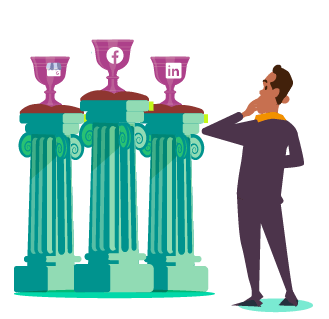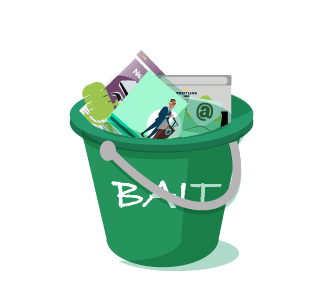Did you know that there’s currently 7.8 billion people in the world?
And out of those 7.8 billion people, almost all of them are actively using social media.
An estimated 3.6 billion people use social media daily to connect with loved ones, digest news, and, most importantly, shop.
Social media is a huge part of our online existence. And it’s an indispensable form of marketing for businesses. It can improve your SEO ranking and help you to build your overall online reputation. But, social media also has the ability to take a social media user and convert them into a potential customer.
In fact, a whopping 54% of social media browsers are using these platforms to research and purchase products. That’s billions of people who are eager to engage with brands, and convert via the power of online social networks.
If you’re not on social media yet, then it’s very important for you and your brand to start using them to promote your brand.
But which social networks are right for you?
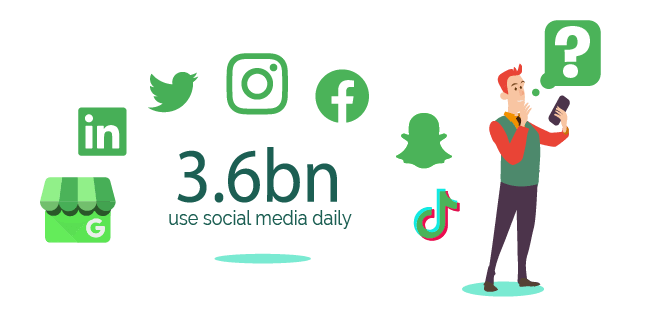
There are over 75 social media platforms of relevance currently in existence. Knowing which one is right for your brand can take a large chunk of time and research.
In this article, I’m going to walk you through the three ‘must-have’ platforms that your brand should have a presence on. As well as look at some of the other mainstream platforms currently available.
The Three Musketeers (Of Social Media)
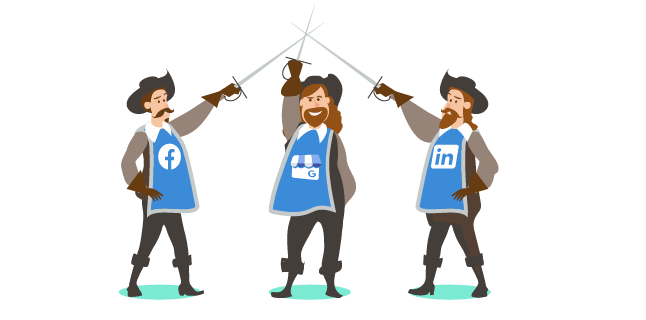
With so many social media platforms out there, targeting different audiences, choosing the right ones can be a frustrating process.
There are three main platforms which your business should be using.
1. Facebook
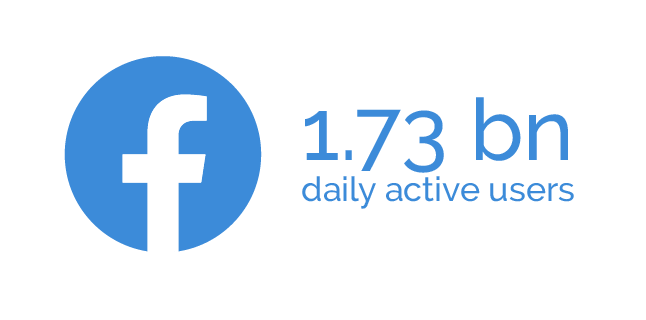
It’s hardly surprising that Facebook has come out on top as one of the main social media platforms you should be placing your brand on. With around 1.73 billion daily active users (DAU), it is the most widely used platform in the world.
And, with such a wide user base of users, any brand will be able to find their target audience on Facebook. Facebook makes it easy to start advertising to them too.
Facebook is likely to make a notable difference in helping you to reach your goals for online, whether these are:
- To build brand awareness
- Increase website traffic
- Lead generation
- To improve your online conversions
Facebook has a fantastic advertising platform, one which is by far the most developed of all the platforms out there.
It allows you to very specifically segment your audiences. By age, location, gender, employment, interests, purchasing behaviours, relationship status, and much more.
This allows you to target your specific audience, and place your ads and content in their newsfeed as they’re scrolling.
Once you’ve built a steady following on your page, you can post updates, images, events, videos and articles. This is because Facebook has a vast collection of features and ways to share your posts to their profiles.
Which means it’s a great platform for building a community!
And, with Facebook’s algorithm, your content will only appear in your engaged follower’s feeds, irrelevant of when it was posted.
This means that as long as you are creating value for your audience, they’ll keep seeing your content. It’s a better experience for them too. As your audience only sees what interests them, which encourages engagement with your brand!
2. LinkedIn
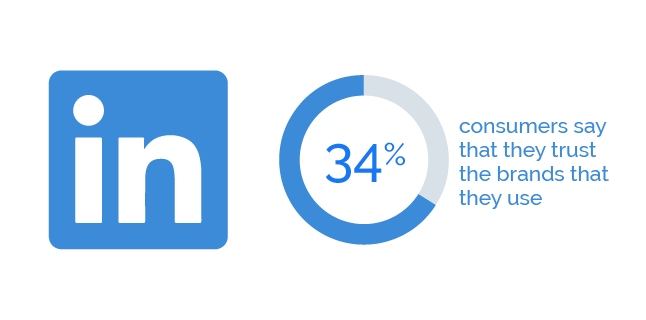
LinkedIn is a professional platform, which allows network users to see the faces and voices behind brands and businesses.
In a world where only 34% of consumers say that they trust the brands that they use. That’s why it’s more important than ever to try and show a more ‘human’ side to your company. And, try not to appear as a faceless logo to the consumer.
LinkedIn is great for doing this, whilst maintaining your reputation as being a knowledge leader and authority in your field.
It’s a great place to build your reputation and authority as an expert. It allows you to network with others, comment on industry updates, and share updates about your own company.
If you’re a small start up, it’s also great for posting job advertisements. You can even gain insights on workplace culture, and look at your prospective employee’s previous experience and recommendations.
3. Google My Business
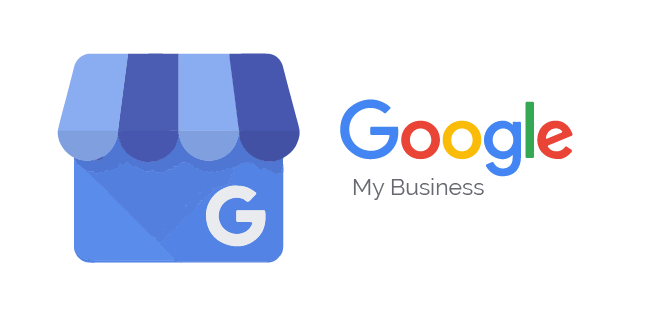
When thinking about social media, Google My Business doesn’t probably spring to mind as a network you should be placed on.
However, creating a Google page for your business is highly important, as it can help Google to display you in search results.
For example, when a customer searches for your brand, Google will display all your relevant business information. This includes your name, your business reviews, contact information and location.
This is great – not only just for helping customers to access your brand easier – but for your local search rankings.
Google My Business allows you to post regular updates about your company too. This is great for sharing any new content you publish, such as blog posts and infographics. You can also promote local events or temporarily change your business hours, if needed.
Other Social Media Platforms
As well as the above three social media platforms, there are plenty of other mainstream platforms you could consider placing your brand on.
Not all of these will be relevant to your brand. Always take the time to research each platform and its user base before going ahead and creating an account.
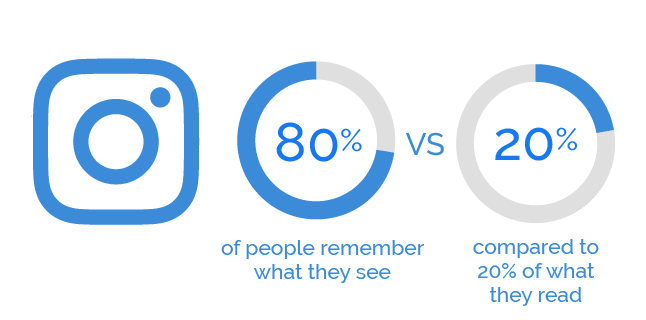
At just 10 years old, it’s surprising how popular Instagram is as a platform. In the past five years alone, it’s grown from 130 million monthly active users to over 1 billion.
It’s a rather unique platform, as you can only publish visual posts – photos and videos – as opposed to text-based updates like on Facebook and LinkedIn.
This is great for businesses and building your reputation online, as according to research 80% of people remember what they see, compared to 20% of what they read.
So, if you can create some great visual content to use on the platform, you can really make an impact. Both on your target audience on your overall brand visibility.
In addition, Instagram is owned by CEO of Facebook, Mark Zuckerberg. This means it has access to the same extensive advertising platform and user base for you to target your ads at.
But, it also has some of its own organic benefits.
Instagram places great emphasis on their hashtags. You can include hashtags in your posts to reach more users interested in your niche and grow your audience. This can be great for small companies who don’t have much of an advertising budget.
And, with it being a Facebook-owned platform, it adopts their same algorithm. This means it connects users with the brands that they engage with and find the most relevant.
Users tend to follow hundreds of accounts too. So Instagram is great for making sure people see posts that they are most interested in. Especially helpful, when they are quickly scrolling through their feed.
For you as a brand, this algorithm can make or break your customers loyalty to you. You need to make sure the visual content you’re sharing really makes an impact. And that it adds value to their social media consumption.
If not, you may struggle to appear in their feeds at all.
YouTube
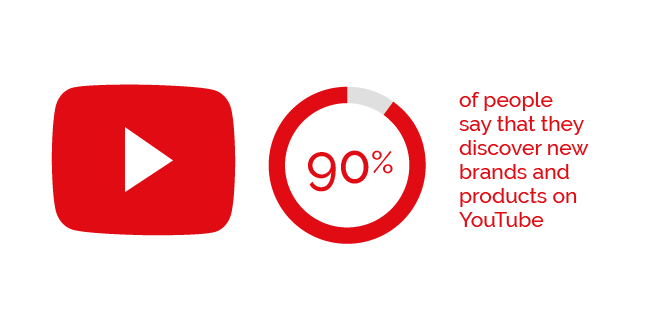
YouTube is a video streaming platform that allows users to watch and/or upload their own content to it.
The platform is hugely popular, with over 2 billion monthly active users, and offers some fantastic opportunities for brands who may want to showcase video content.
For example, if you’re an online appliance store, you could offer some demonstration videos. Or even compare the latest models of vacuum cleaners.
This would allow your audience to enter the sales process with confidence in the product they’re purchasing. But it also gives you an opportunity to increase your visibility and highlight your expertise.
In fact, research suggests that 90% of people say that they discover new brands and products on YouTube. This means there’s plenty of people using the platform who are open to discovering your business on there.
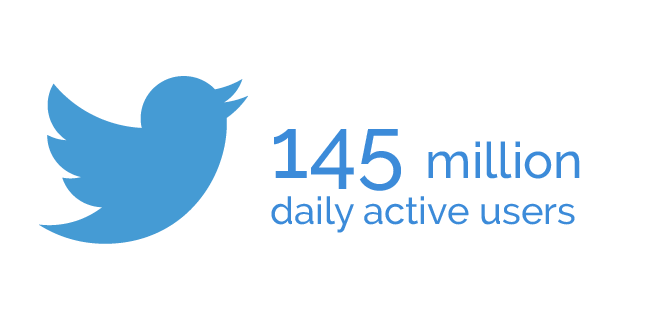
There are 145 million daily active users and 500 million tweets shared around the world each day. This is why Twitter is another mainstream social media platform which could be great for you and your business.
It’s a quick moving platform too. The algorithm means users’ news feeds are filled with other tweets in a chronological order. This is in comparison with the relevance-style algorithm which Facebook and Instagram use.
However, it means that users who follow lots of accounts could easily miss your Tweets because of this.
Twitter has become one of the main ways we consume our news, with a 280 character limit on Tweets. This allows for easily digestible chunks of information to be read. Something which is very handy during the hustle and bustle of everyday life.
For a brand, it can be a quick and easy way to share company updates. Plus, with the ability to retweet other accounts, you can even share industry-related news that may interest your audience instantly.
There is also an advertising platform on Twitter, should you wish to target ads to a specific audience. Though, it is much less advanced than Facebook’s. So probably best for established social media users who have already gained a large following.
Unless of course, you have a large advertising budget.
With that being said, Twitter is still a great platform for organic marketing. Just like Instagram, Twitter uses hashtags to allow users to connect with content that’s relevant to them.
And, with the fast-paced nature of the platform, you can quickly drum up a 280-character Tweet in seconds.
So, if you know your audience is on Twitter – which you can check by doing a few hashtag searches – you should definitely consider it. You’ll be able to create quick content and reach an audience without needing to spend any money at all.
TikTok
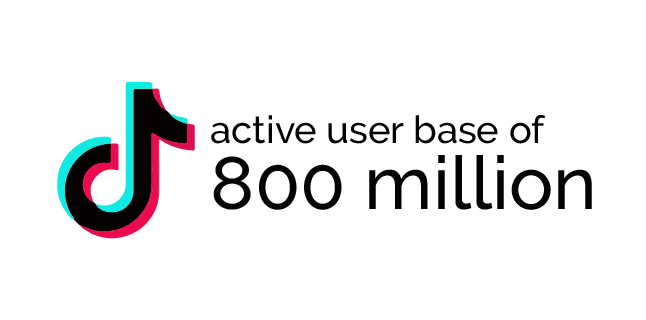
It’s impossible to talk about social media in 2020 without addressing one of the largest platforms to have surfaced: TikTok.
As the most downloaded app this year, the platform boasts an active user base of 800 million. This makes it larger than both Twitter and LinkedIn.
It is most popular amongst younger audiences (16-24). However, with the growth of millennial influencers, is starting to be used amongst older audiences too.
TikTok is essentially a short form video platform. It has endless editing opportunities for users to get creative with their footage. Unlike YouTube, the platform only allows videos of 15-60 seconds in length, making for short and punchy content.
This ability to quickly digest video content is partly responsible for its success. In the noisy marketplace of 2020, TikTok offers a brief moment of escapism. You can discover all styles of content; from funny dog videos to dances, cookery lessons and even MTV-cribs style house tours – there’s something for everyone on TikTok.
A unique feature of this popular platform is the ‘discover’ page. This gives the ability for accounts with little to no following to appear on millions of people’s feeds. Effectively, giving them the opportunity go ‘viral’ with their content.
Of course, TikTok is highly secretive about their algorithm. And, no one truly knows what it takes to appear on this page. With the variety of available content, there’s no knowing what could be trending from one day to the next.
With its mysterious algorithm and young demographic of users, you need to be cautious using the platform. If you decide to use TikTok as a platform to market your business on, do your research.
Of course, there have been great successes from companies who have taken their brands global with it. But you will need to put in a lot of effort and creativity into finding out what works for you.
And, this isn’t a possibility for most small businesses who want some fairly speedy and measurable results.
TikTok is best for established brands. Brands looking to find new ingenious ways to reach younger audiences or show off an informal side of their business.
Snapchat
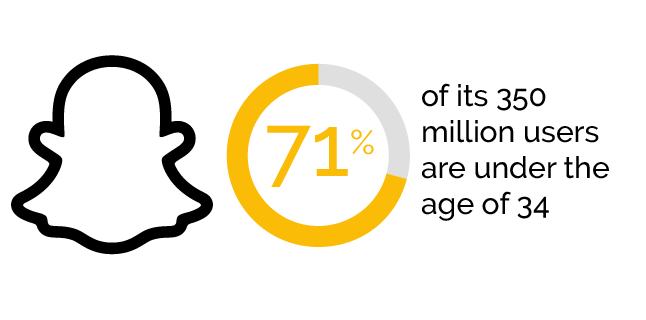
Another visual app, Snapchat is a mobile app which allows users to send a photo or video directly to another user, or upload it to a 24-hour-long story.
Like TikTok, its user base is largely made up of younger audiences – in fact, 71% of its 350 million users are under the age of 34.
The app also has a discovery page, which is great for placing paid advertisements to your target audience.
Users can also follow your account by adding you as a friend to engage in customer conversations and follow your stories.
And, as an added bonus, if you’re hosting an event or are in a certain location, you can even post content to your story. A story which can be themed, with the ability to include bespoke stickers that are personal to your brand.
It’s a great one for building a following of dedicated users and building your brand’s image. But, unlike larger platforms, it isn’t used by many older audiences. It takes a lot of time and creativity to build a strong following.
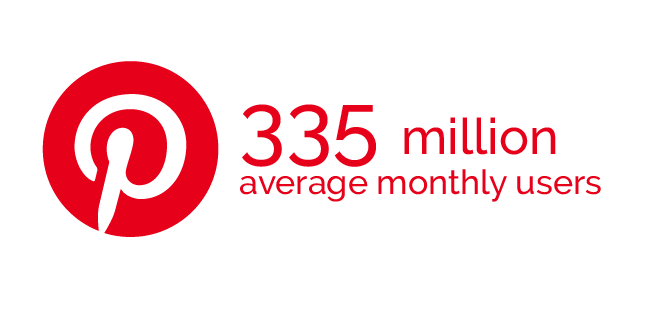
Finally, Pinterest, a wholly visual platform, is great for any brand that has visually-enticing content.
It boasts another large user base of around 335 million average monthly users, with an active user base that has grown by 26% in the past year alone.
Pinterest has clickable images – called ‘pins’ – which you can hyperlink to articles and external links. This is great for getting more traffic to click through to your own website.
Pinterest does have an advertising platform, where you can boost the reach of your posts and track their conversions.
But, like Instagram, also has some fantastic capabilities in terms of organic marketing.
Like search engines, Pinterest values keyword matches very highly in their algorithm. The more keywords in your post which align with a searcher’s query, the higher it will appear in their feed.
This can give brands the chance to plan their content around exact keyword matches. Great for those with little to no budget at all!
Food recipes, lifestyle how-to articles, beauty and outfit ideas are some of the top searches on this platform. So, if your business falls within any of those industries, make sure you’re sharing content on here.
You Don’t Need To Be On Every Platform To Make An Impact
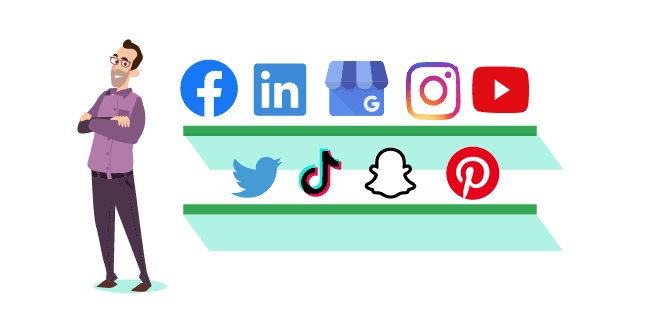
With billions of active users across multiple social media platforms, it may seem like a good idea to have a presence on every single platform.
But, this is a bad decision to take if you’re just starting out or don’t have the resources. If you try to take on lots of platforms in one go, you will inevitably spread yourself too thin.
Instead, spend time launching on the social media platforms which will benefit your business the most at the start by exposing you to your target audience.
Once you’ve established your online presence and started to build a dedicated base of followers, you can branch out. Start to test the waters with some less-obvious social media platforms.
Always remember to stick to the platforms which your target audience are active on. These platforms are likely to be where you can see a return on your investment.
Summary
Social media is an essential part of any digital marketing strategy. With billions of active users worldwide, it’s an indispensable way of marketing your brand with almost little to no cost.
However, making sure you’re on the correct platforms for your brand is vital, as you don’t want to drive your efforts on a particular network to see no return.
There are three main platforms you should be on: Facebook, LinkedIn and Google My Business. Each has a large user base, can help you to establish your authority, and are easy wins in terms of building visibility for your brand.
Aside from these, there are lots of other social media networks available, each unique from the other and with different user bases.
Before deciding which of these platforms to launch on, make sure you’ve researched them carefully. Ensure that they align with your brand and your target audience.
If you can choose the right platforms that align with your brand, and create content that your target audience will want to engage with, then your social media can do wonders for your business.
Social media can grow your audience, improve conversations, and forge connections. All of which, will ensure a loyal customer base in the future.
Outsourcing Your Digital Marketing To A Marketing Consultant
Social media on its own can be a hugely time consuming strategy, especially if you find yourself active across multiple platforms.
When including it as part of your overall strategy, you’ll soon come to realise what a time-consuming process it is. The research, creation and implementation of a quality content marketing plan takes time.
If this is the case, then outsourcing your digital marketing to a marketing consultant like myself may be more beneficial to you.
Together, my team and I can work with you. We’ll create a bespoke plan that suits your company’s goals, and even help with implementing it if you need us to.
You can find out more about the work my team and I do by getting in contact. I’d be more than happy to have an obligation-free chat and learn more about your business.
